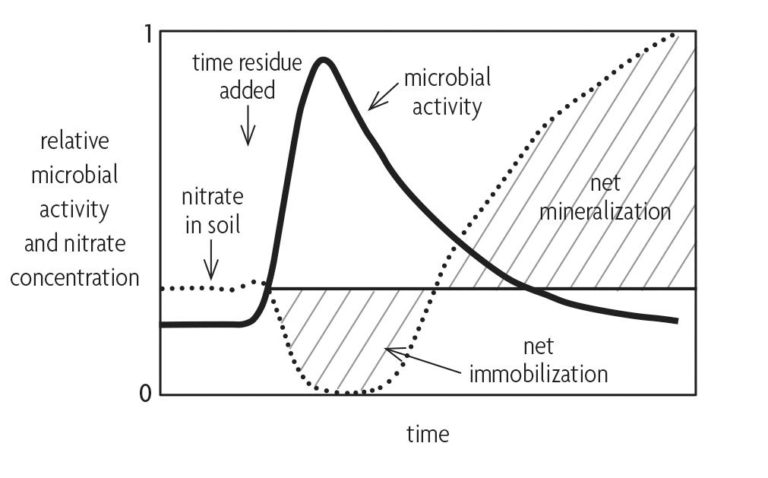Soil fertility is one of the most important soil characteristics for crop growth. Crops require nitrogen, phosphorus, potassium and other nutrients at the right levels to grow properly and yield well. Fertile soils retain moderate to high levels of the nutrients needed for plant growth and good yield. Both soil organic matter and mineral composition influence inherent fertility. They affect the nutrients present, how they are stored in the soil, and, along with soil biology, how nutrients are made available to plants.
The capacity of a soil to retain positively charged nutrients such as calcium, magnesium or ammonium is known as cation exchange capacity (CEC). The CEC is determined by the type of clay, organic matter content and pH. Kaolin, a type of clay typically found in Southeast soils, has a low CEC of 1–10 milliequivalents of charge per 100 grams of soil (meq per 100g). In contrast, soil organic matter can have 100–300 meq per 100g. Consequently, although soil organic matter is a small percentage of the soil, it can be a major contributor to CEC. The combination of low soil organic matter and clays with low CEC means most soils in the Southeast have a CEC in the range of 5–10 meq per 100g, whereas typical soils in the Midwest have CECs of 30 meq per 100g. The mineral fraction of a soil cannot be changed, but CEC can be increased by increasing soil organic matter and maintaining a near neutral pH of 6.0–6.5. In acidic soils, the CEC of both clay and organic matter increases as pH increases [53].
Soil organic matter also releases nutrients as it decomposes. Even when inorganic fertilizer is applied, nitrogen released from soil organic matter can be as much as 70 percent of the nitrogen used by a crop like corn [37]. The nutrients in organic matter cannot be used by plants until they are released through a process called mineralization. As soil organisms such as bacteria and fungi break down organic matter, some of the nutrients mineralized are used for their growth and some are left available for plant use.
Figure 3.7 shows this process over a growing season when a low-nitrogen, high C:N ratio plant residue is added to the soil. At first, microbial activity increases and nitrate concentration decreases as microorganisms decompose the residue, grow and incorporate nitrogen into their bodies. This process is referred to as immobilization. Microbial activity eventually declines and microorganisms die. Nitrogen is then released as the dead microorganisms decay. The advantage and disadvantage of nutrient release by organic matter is that it happens slowly over the growing season. This can mean that, with every rainfall, decomposition is encouraged and nutrients are released. It also means that nutrients, particularly nitrogen, may not be released fast enough when crop demand is high.
Soil organic matter has other effects on fertility such as making soil phosphorus more available to plants. These effects are intimately tied to soil biology. We often think of fertility simply in terms of adding fertilizer or lime. The chemical component of fertility is certainly important, but soil biology also plays an important role.

